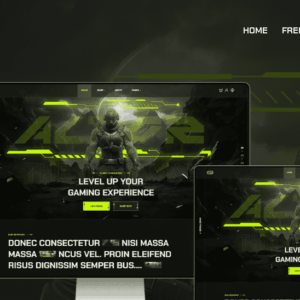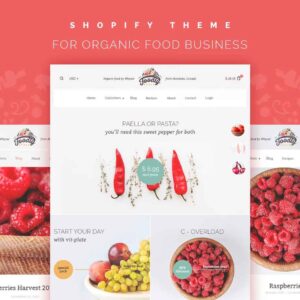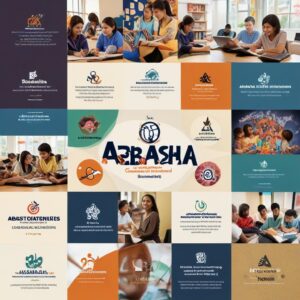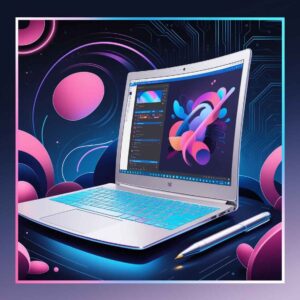
Best Free Prompt to AI Image Generator for Illustrator 2024
Free Prompt to AI Image Generator for Illustrator
Overview of AI Image Generators
AI Image Generators are tools that use artificial intelligence to create images from text descriptions or other inputs. These tools have become increasingly important in various fields, including design, marketing, and entertainment. The rise in popularity of AI Image Generators can be attributed to their ability to produce high-quality images quickly and efficiently, saving time and resources for professionals and hobbyists alike.
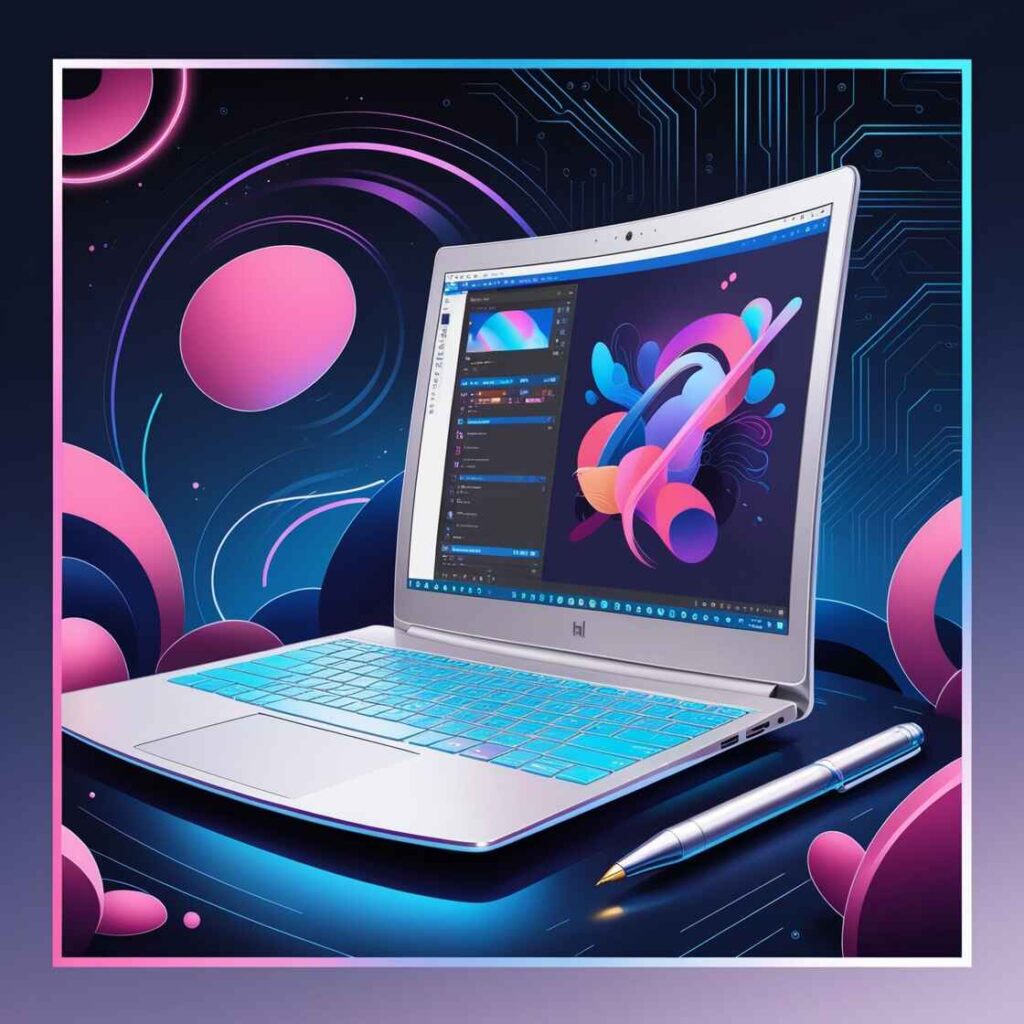
The purpose of this blog post is to help illustrators find the best free AI image generators available. By exploring these tools, illustrators can enhance their creative process and produce stunning visuals without incurring additional costs. Additionally, we will discuss how you can sell prompts on your website to further support your creative endeavors.
Table of Contents
AI Image Generators: Revolutionizing Visual Creation
Definition and Basic Functionality
AI Image Generators are cutting-edge tools that leverage artificial intelligence to create images from text descriptions or other inputs. These tools have transformed the visual creation process, enabling illustrators to produce high-quality images swiftly and efficiently. By utilizing advanced machine learning algorithms, AI Image Generators can interpret and understand prompts to generate detailed and accurate visuals.
How They Work with Prompts
Prompts are specific instructions or descriptions provided to AI Image Generators to guide the image creation process. When an illustrator inputs a prompt, the AI processes the information and generates an image that matches the description. This capability allows illustrators to experiment with various ideas and concepts without the need for extensive manual drawing or design work.
The Mechanics Behind AI Image Generators
AI Image Generators operate using sophisticated machine learning models, often based on neural networks. These models are trained on vast datasets of images and corresponding text descriptions. Through this training, the AI learns to associate specific words and phrases with visual elements. When a prompt is given, the AI uses this learned knowledge to create an image that aligns with the description.
For instance, if an illustrator inputs a prompt like “a serene beach at sunset,” the AI will generate an image featuring a beach with the sun setting in the background, capturing the serene atmosphere described.
Benefits for Illustrators
AI Image Generators offer numerous benefits for illustrators:
- Efficiency: These tools significantly reduce the time required to create high-quality images. Illustrators can generate visuals in minutes, allowing them to focus on refining their ideas and concepts.
- Creativity: AI Image Generators enable illustrators to explore a wide range of styles and concepts. By experimenting with different prompts, they can quickly visualize various ideas and choose the best ones for their projects.
- Accessibility: With the availability of free AI image generators, illustrators of all skill levels can access these powerful tools. This democratizes the creative process, allowing more people to produce professional-quality visuals.
Free AI Image Generators
Several free AI image generators are available, providing illustrators with accessible options to enhance their creative process. Some popular free AI image generators include:
- Craiyon: Previously known as DALL·E mini, Craiyon allows users to create AI-generated art based on text prompts. It offers a user-friendly interface and generates multiple images at a time.
- DeepAI: This platform provides a free AI image generator that creates images from text descriptions. It supports various styles and allows users to experiment with different visual concepts.
Enhancing the Creative Process
By understanding the basic functionality of AI Image Generators and how they work with prompts, illustrators can effectively utilize these tools to enhance their creative process. Whether using free AI image generators or exploring premium options, the ability to quickly generate visuals based on specific prompts is a game-changer for the creative industry.
AI Image Generators have revolutionized the way visuals are produced, offering illustrators a powerful tool to create high-quality images efficiently. By leveraging machine learning algorithms, these tools can interpret prompts and generate detailed visuals, enabling illustrators to experiment with different ideas and concepts. With the availability of free AI image generators, the creative process has become more accessible, allowing illustrators of all skill levels to produce professional-quality visuals. As AI technology continues to advance, the capabilities of AI Image Generators will only improve, further transforming the creative industry.
Benefits of Using AI Image Generators for Illustrators
Time-Saving
One of the most significant advantages of AI Image Generators is the substantial amount of time they save for illustrators. Traditionally, creating high-quality images involves extensive manual drawing, design work, and numerous iterations. This process can be incredibly time-consuming, often requiring hours or even days to complete a single image. However, with AI Image Generators, illustrators can quickly generate high-quality images based on specific prompts, drastically reducing the time needed for image creation.
For example, an illustrator working on a project that requires multiple concept images can input various prompts into an AI Image Generator and receive a range of images within minutes. This efficiency allows illustrators to focus more on refining their ideas and less on the labor-intensive aspects of image creation. By automating the initial stages of image generation, AI Image Generators free up valuable time that illustrators can use to enhance the overall quality and creativity of their work.
Enhanced Creativity
AI Image Generators also play a crucial role in enhancing creativity. These tools provide illustrators with a wide range of possibilities by generating unique and diverse images from simple prompts. This capability inspires illustrators to explore new concepts and styles that they might not have considered otherwise. By experimenting with different prompts, illustrators can push the boundaries of their creativity and discover innovative ways to express their ideas.
For instance, an illustrator might input a prompt like “a futuristic cityscape at night” and receive several different interpretations of that scene. Each generated image can offer a new perspective or idea, sparking further creativity and exploration. This process allows illustrators to experiment with various visual elements, such as color schemes, lighting, and composition, without the need for extensive manual adjustments. As a result, AI Image Generators become a valuable tool for brainstorming and developing new artistic concepts.
Cost-Effective
Using free AI image generators is a cost-effective solution for illustrators, especially those who may not have the budget for expensive design software or hiring additional help. Professional design software can be costly, and hiring skilled artists or designers to assist with projects can quickly add up. Free AI image generators provide access to powerful tools without any financial investment, making it easier for illustrators to produce professional-quality images without incurring additional costs.
For freelance illustrators or small studios with limited budgets, free AI image generators offer a practical alternative to expensive resources. These tools enable illustrators to maintain a high standard of work while managing their expenses effectively. Additionally, the availability of free AI image generators democratizes the creative process, allowing illustrators of all skill levels to access advanced image generation capabilities.
Practical Applications of AI Image Generators
AI Image Generators have a wide range of practical applications that can benefit illustrators in various ways. Here are a few examples:
- Concept Art: Illustrators working on concept art for films, video games, or other media can use AI Image Generators to quickly produce multiple versions of a scene or character. This allows for rapid iteration and refinement of ideas, ultimately leading to more polished and compelling concepts.
- Storyboarding: Creating storyboards for animations or films can be a time-consuming process. AI Image Generators can help illustrators generate detailed and accurate visuals for each scene based on text descriptions, streamlining the storyboarding process and ensuring consistency in visual storytelling.
- Marketing and Advertising: In the marketing and advertising industry, visuals play a crucial role in capturing the audience’s attention. AI Image Generators can assist illustrators in creating eye-catching and unique images for campaigns, social media posts, and promotional materials, enhancing the overall impact of marketing efforts.
- Educational Materials: Educators and content creators can use AI Image Generators to produce high-quality visuals for textbooks, presentations, and online courses. These images can help illustrate complex concepts and make learning materials more engaging and accessible.
Free AI Image Generators
Several free AI image generators are available, providing illustrators with accessible options to enhance their creative process. Some popular free AI image generators include:
- Craiyon: Previously known as DALL·E mini, Craiyon allows users to create AI-generated art based on text prompts. It offers a user-friendly interface and generates multiple images at a time.
- DeepAI: This platform provides a free AI image generator that creates images from text descriptions. It supports various styles and allows users to experiment with different visual concepts.
These free tools offer illustrators the opportunity to explore the capabilities of AI Image Generators without any financial commitment. By leveraging these resources, illustrators can enhance their workflow, experiment with new ideas, and produce high-quality images efficiently.
AI Image Generators have revolutionized the way visuals are produced, offering illustrators a powerful tool to create high-quality images efficiently. By leveraging machine learning algorithms, these tools can interpret prompts and generate detailed visuals, enabling illustrators to experiment with different ideas and concepts. The time-saving, creativity-enhancing, and cost-effective benefits of AI Image Generators make them an invaluable asset for illustrators looking to elevate their work.
Whether using free AI image generators or exploring premium options, the ability to quickly generate visuals based on specific prompts is a game-changer for the creative industry. As AI technology continues to advance, the capabilities of AI Image Generators will only improve, further transforming the creative landscape and empowering illustrators to push the boundaries of their creativity.
Key Features to Look for in AI Image Generators
AI Image Generators have become indispensable tools for illustrators, offering a range of functionalities that streamline the creative process. When selecting an AI Image Generator, it’s essential to consider several key features to ensure the tool meets your needs and enhances your workflow. Here, we’ll delve into the most critical features to look for, including a user-friendly interface, the quality of generated images, and customization options.
User-Friendly Interface
A user-friendly interface is paramount when choosing an AI Image Generator. Illustrators need tools that are intuitive and easy to navigate, allowing them to focus on their creative process rather than getting bogged down by complicated settings or controls. Here are some aspects to consider:
- Ease of Navigation: The interface should be straightforward, with clearly labeled menus and options. This helps illustrators quickly find the features they need without wasting time.
- Intuitive Design: An intuitive design means that even those who are not tech-savvy can use the tool effectively. This is particularly important for illustrators who may not have a background in technology but still want to leverage the power of AI Image Generators.
- Tutorials and Support: Access to tutorials, guides, and customer support can significantly enhance the user experience. These resources help users understand how to use the tool effectively and troubleshoot any issues that arise.
A well-designed, user-friendly interface allows illustrators to focus on their creative work, making the process of generating images more enjoyable and efficient.
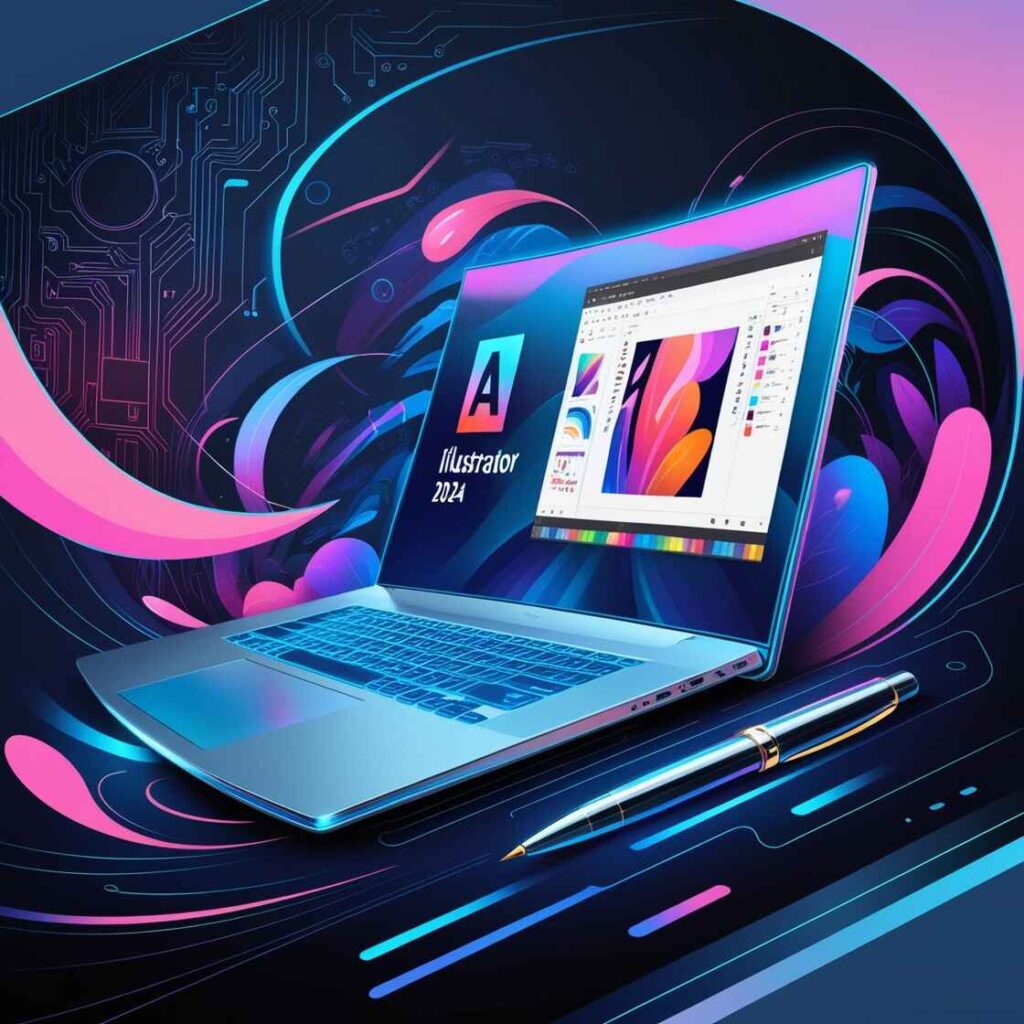
Quality of Generated Images
The quality of the images produced by AI Image Generators is another crucial feature to consider. High-quality images ensure that the final output meets professional standards, which is vital for illustrators who rely on these tools for their work. When evaluating free AI image generators, it’s important to test the resolution, detail, and overall aesthetic of the generated images. Here’s what to look for:
- Resolution: High-resolution images are essential for professional use. Ensure that the AI Image Generator can produce images with sufficient resolution for your needs, whether for print or digital use.
- Detail and Accuracy: The generated images should be detailed and accurately reflect the prompts provided. This includes correct proportions, realistic textures, and appropriate color schemes.
- Consistency: The tool should consistently produce high-quality images, regardless of the complexity of the prompts. This reliability is crucial for maintaining a professional standard in your work.
By focusing on the quality of the generated images, illustrators can ensure that their final output is polished and meets the expectations of their clients or audience.
Customization Options
Customization options are a key feature that allows illustrators to tailor the generated images to their specific requirements. AI Image Generators that offer a range of customization settings enable illustrators to adjust various aspects of the image, such as style, color, and composition. This flexibility ensures that the final output closely matches the illustrator’s vision and enhances their creative expression. Here are some customization features to look for:
- Style Adjustments: The ability to change the artistic style of the generated images, such as switching between realistic, abstract, or cartoonish styles, can be incredibly useful for illustrators working on diverse projects.
- Color Customization: Adjusting the color palette to match specific themes or branding guidelines is essential for maintaining consistency across different visual assets.
- Composition Control: Features that allow illustrators to modify the composition, such as repositioning elements or adjusting the perspective, provide greater control over the final image.
- Detail Enhancement: Tools that enable fine-tuning of details, such as adding or removing elements, adjusting textures, or refining edges, can significantly enhance the quality of the generated images.
Customization options empower illustrators to create images that are not only high-quality but also uniquely tailored to their creative vision.
Practical Applications of Key Features
Understanding the importance of these key features can help illustrators make informed decisions when selecting an AI Image Generator. Here’s how these features can be practically applied:
- User-Friendly Interface in Practice: An illustrator working on a tight deadline can quickly generate multiple concept images without spending time learning complex software. The intuitive design and easy navigation allow for rapid experimentation and iteration.
- Quality of Generated Images in Practice: A freelance illustrator creating marketing materials for a client can rely on the AI Image Generator to produce high-resolution, detailed images that meet professional standards. This ensures that the final output is polished and ready for use in various media.
- Customization Options in Practice: An illustrator working on a children’s book can use customization features to adjust the style and color palette of the images to match the book’s theme. This flexibility allows for a cohesive and visually appealing final product.
Free AI Image Generators
Several free AI image generators are available, providing illustrators with accessible options to enhance their creative process. Some popular free AI image generators include:
- Craiyon: Previously known as DALL·E mini, Craiyon allows users to create AI-generated art based on text prompts. It offers a user-friendly interface and generates multiple images at a time.
- DeepAI: This platform provides a free AI image generator that creates images from text descriptions. It supports various styles and allows users to experiment with different visual concepts.
These free tools offer illustrators the opportunity to explore the capabilities of AI Image Generators without any financial commitment. By leveraging these resources, illustrators can enhance their workflow, experiment with new ideas, and produce high-quality images efficiently.
Selecting the right AI Image Generator involves considering several key features, including a user-friendly interface, the quality of generated images, and customization options. These features are essential for maximizing the benefits of these powerful tools and ensuring that they meet the needs of illustrators. Whether using free AI image generators or exploring premium options, focusing on these key features will help illustrators enhance their creative process and produce professional-quality images.
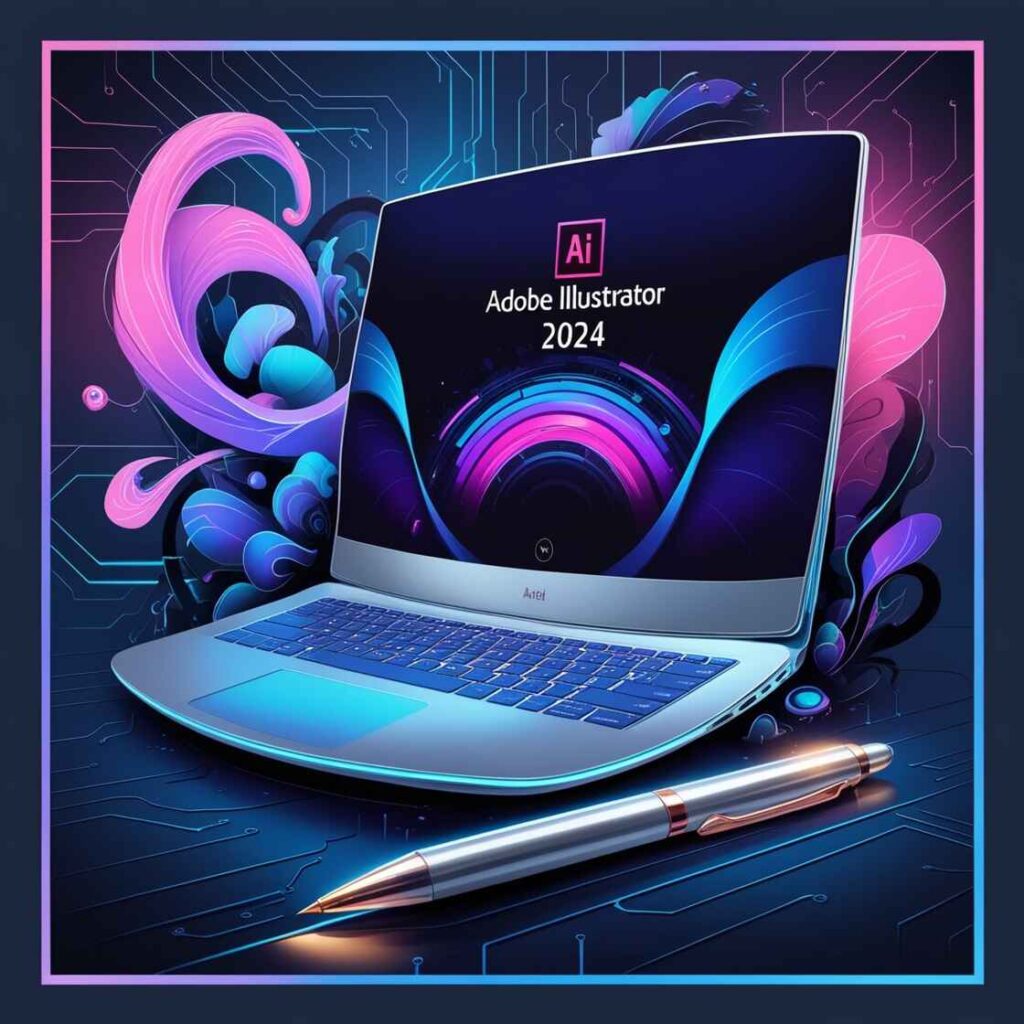
By leveraging the time-saving, creativity-enhancing, and cost-effective benefits of AI Image Generators, illustrators can significantly improve their workflow and output. As AI technology continues to advance, the capabilities of AI Image Generators will only improve, further transforming the creative landscape and empowering illustrators to push the boundaries of their creativity.
Top Free AI Image Generators in 2024
DALL-E 3
DALL-E 3, developed by OpenAI, is a powerful AI image generator that builds on the success of its predecessor, DALL-E 2. It excels in creating detailed and lifelike images from text prompts. This tool is particularly useful for illustrators who need high-quality visuals quickly. DALL-E 3 also integrates text into images seamlessly, making it a versatile choice for various creative projects.
Features:
| Feature | Description |
|---|---|
| Image Quality | High-resolution, detailed images |
| Text Integration | Seamless incorporation of text into images |
| Accessibility | Available through ChatGPT Plus and Bing Chat |
| Safety Features | Robust measures to avoid inappropriate or copyrighted content |
Pros and Cons:
| Pros | Cons |
|---|---|
| Enhanced image quality | Limited editing adjustments |
| Efficient text integration | Variable outcomes from requests |
| Integration with Bing Chat | Absence of DALL-E 2’s direct editing tools |
| Robust safety features |
Pricing:
| Plan | Price |
|---|---|
| ChatGPT Plus | $20 per month |
| Bing Chat | Free |
Craiyon
Craiyon, formerly known as DALL-E Mini, is a free AI image generator that offers a simplified version of the DALL-E model. It is designed for users who need quick and easy access to AI-generated images without the complexity of more advanced tools. Craiyon is ideal for illustrators looking for a straightforward solution to generate visuals from text prompts.
Features:
| Feature | Description |
|---|---|
| User Interface | Simple and user-friendly |
| Image Generation | Quick creation of images from text prompts |
| Accessibility | Completely free to use |
| Community Support | Active user community for sharing and feedback |
Pros and Cons:
| Pros | Cons |
|---|---|
| Easy to use | Lower image quality compared to DALL-E 3 |
| Fast image generation | Limited customization options |
| Free to use | Less advanced features |
| Active community support |
Pricing:
| Plan | Price |
|---|---|
| Free | $0 |
DeepAI
DeepAI offers a range of AI tools, including an image generator that is popular among illustrators for its versatility and ease of use. This tool allows users to create images from text prompts and offers various customization options to tailor the output to specific needs. DeepAI is a great choice for those looking for a balance between functionality and accessibility.
Features:
| Feature | Description |
|---|---|
| Customization | Various options to adjust image style and details |
| Image Quality | Good resolution and detail |
| Accessibility | Free with optional premium features |
| Integration | Can be integrated with other DeepAI tools |
Pros and Cons:
| Pros | Cons |
|---|---|
| Versatile customization options | Some features require a premium account |
| Good image quality | Occasional inconsistencies in output |
| Free access with premium options | |
| Integration with other tools |
Pricing:
| Plan | Price |
|---|---|
| Free | $0 |
| Premium | Varies |
By exploring these top free AI image generators, illustrators can find the best tools to enhance their creative process. Whether you choose DALL-E 3, Craiyon, or DeepAI, each offers unique features and benefits to suit different needs and preferences. 🎨✨
How to Use Prompts Effectively
Using prompts effectively is crucial for obtaining the best possible responses from AI. Here are some key strategies:
- Define Your Objective: Clearly understand what you want to achieve with your prompt. Whether it’s generating creative content, solving a problem, or obtaining specific information, having a clear goal is crucial. For example, if you want to generate a creative story, your objective might be to create an engaging narrative that captures the reader’s imagination.
- Provide Context: Give the AI enough background information to understand the task. This helps in generating more accurate and relevant responses. For instance, if you’re asking for a summary of a book, mention the book’s title, author, and any specific aspects you want to focus on.
- Be Specific: The more detailed your prompt, the better the response. Avoid vague language and be precise about what you need. For example, instead of asking, “Tell me about climate change,” you could ask, “Explain the impact of climate change on polar bear populations in the Arctic.”
- Iterate and Refine: Don’t hesitate to tweak your prompts based on the responses you get. Iteration helps in honing the prompt to get the desired output. If the initial response isn’t quite what you were looking for, adjust the prompt to be more specific or provide additional context.
Crafting the Perfect Prompt
Crafting the perfect prompt involves several steps:
- Start with a Clear Question or Statement: Begin with a direct question or a clear statement that outlines what you need. For example, “Explain the impact of climate change on polar bears.”
- Include Necessary Details: Add any specific details that can guide the AI. For instance, “Explain the impact of climate change on polar bears, focusing on their hunting patterns and habitat changes.”
- Specify the Format: If you need the response in a particular format, mention it. For example, “Provide a bullet-point summary of the impact of climate change on polar bears.”
- Set the Tone and Style: Indicate the tone and style you want. For example, “Explain the impact of climate change on polar bears in a formal and scientific tone.”
Examples of Effective Prompts
- Informational Prompt: “List the top five benefits of renewable energy sources.”
- Instructional Prompt: “Write a step-by-step guide on how to bake a chocolate cake.”
- Creative Prompt: “Create a short story about a time-traveling detective.”
- Conversational Prompt: “What are some tips for managing stress during exams?”
- Problem-Solving Prompt: “Suggest ways to improve team collaboration in a remote work environment.”
How to Use Prompts Effectively
- Define Your Objective: This step is about clarity. Knowing exactly what you want to achieve helps in formulating a precise prompt. For instance, if your goal is to generate a marketing slogan, your objective should be to create a catchy and memorable phrase that encapsulates your brand’s message.
- Provide Context: Context is crucial for AI to generate relevant responses. For example, if you’re asking for advice on a technical issue, provide details about the problem, the system you’re using, and any steps you’ve already taken to resolve it. This background information helps the AI tailor its response to your specific situation.
- Be Specific: Specificity reduces ambiguity and helps the AI understand exactly what you’re looking for. For example, instead of asking, “How do I improve my website?” you could ask, “What are some effective strategies for improving the SEO of a small business website?”
- Iterate and Refine: Iteration is key to refining your prompts. If the initial response isn’t satisfactory, analyze what might be missing or unclear in your prompt and adjust accordingly. This process helps in honing the prompt to get the desired output.
Crafting the Perfect Prompt
- Start with a Clear Question or Statement: A clear question or statement sets the stage for the AI to understand your needs. For example, “Describe the process of photosynthesis in plants” is a clear and direct prompt that leaves little room for ambiguity.
- Include Necessary Details: Adding specific details helps the AI generate more accurate and relevant responses. For instance, “Describe the process of photosynthesis in plants, focusing on the role of chlorophyll and sunlight” provides additional context that guides the AI’s response.
- Specify the Format: Specifying the format ensures that the response meets your expectations. For example, “Provide a bullet-point summary of the process of photosynthesis in plants” clearly indicates that you want the information in a concise, easy-to-read format.
- Set the Tone and Style: Indicating the tone and style helps the AI match the response to your desired voice. For example, “Describe the process of photosynthesis in plants in a formal and scientific tone” ensures that the response is appropriate for an academic or professional audience.
Examples of Effective Prompts
- Informational Prompt: “List the top five benefits of renewable energy sources.” This prompt is clear, specific, and focused on obtaining a list of benefits, making it easy for the AI to generate a relevant response.
- Instructional Prompt: “Write a step-by-step guide on how to bake a chocolate cake.” This prompt provides a clear task and specifies the format (step-by-step guide), ensuring that the response is detailed and structured.
- Creative Prompt: “Create a short story about a time-traveling detective.” This prompt encourages creativity and provides a specific theme (time-traveling detective), guiding the AI in generating an engaging narrative.
- Conversational Prompt: “What are some tips for managing stress during exams?” This prompt is conversational and seeks practical advice, making it easy for the AI to generate helpful and relevant tips.
- Problem-Solving Prompt: “Suggest ways to improve team collaboration in a remote work environment.” This prompt is focused on solving a specific problem and provides enough context (remote work environment) to guide the AI’s response.
By following these guidelines, you can craft prompts that are clear, specific, and effective, ensuring you get the best possible responses from AI. Whether you’re looking to generate creative content, solve a problem, or obtain specific information, using prompts effectively can significantly enhance the quality of the AI’s responses. Remember to define your objective, provide context, be specific, and iterate and refine your prompts as needed. Crafting the perfect prompt involves starting with a clear question or statement, including necessary details, specifying the format, and setting the tone and style. By doing so, you can ensure that the AI understands your needs and generates responses that meet your expectations.
Absolutely! Let’s dive into a detailed comparison of free AI image generators, focusing on side-by-side feature comparison and performance analysis. I’ll keep the paragraphs short and focused.
Comparison of Free AI Image Generators
- PlayGround AI
- Features: Offers a user-friendly interface, various styles, and customization options.
- Performance: Generates high-quality images quickly but may struggle with complex prompts.
- Adobe Firefly
- Features: Integrates seamlessly with Adobe Creative Cloud, providing advanced editing tools.
- Performance: Excels in producing detailed and professional images, though it requires a learning curve.
- Bluewillow
- Features: Simple interface with basic editing tools and a variety of templates.
- Performance: Good for quick and simple image generation but lacks advanced features.
- Picsart
- Features: Extensive library of templates, stickers, and effects.
- Performance: Great for social media content creation, though image quality can vary.
- DeepAI
- Features: Offers various AI models for different styles and purposes.
- Performance: Versatile and capable of generating unique images, but speed can be an issue.
- Nightcafe
- Features: Focuses on artistic styles and offers community features for sharing creations.
- Performance: Excellent for artistic and creative projects, though it may not suit professional needs.
Side-by-Side Feature Comparison
| Generator | User Interface | Customization | Integration | Speed | Quality |
|---|---|---|---|---|---|
| PlayGround AI | User-friendly | High | Low | Fast | High |
| Adobe Firefly | Professional | Advanced | High | Medium | Very High |
| Bluewillow | Simple | Basic | Low | Fast | Medium |
| Picsart | Extensive | Moderate | Medium | Fast | Medium |
| DeepAI | Versatile | High | Medium | Slow | High |
| Nightcafe | Artistic | High | Low | Medium | High |
Performance Analysis
- PlayGround AI: Best for quick, high-quality images with easy customization.
- Adobe Firefly: Ideal for professional use with advanced tools but requires some expertise.
- Bluewillow: Suitable for beginners needing simple and fast image generation.
- Picsart: Great for social media content with a variety of creative tools.
- DeepAI: Versatile but slower, suitable for unique and detailed images.
- Nightcafe: Perfect for artistic projects and community engagement.
Common Challenges and How to Overcome Them
Dealing with Low-Quality Outputs
- Identify the Cause: The first step in addressing low-quality outputs is to determine the root cause. Low-quality results can stem from vague prompts, insufficient context, or inherent limitations of the AI model. By pinpointing the issue, you can take targeted actions to improve the output.
- Refine Your Prompts: One of the most effective ways to enhance the quality of AI-generated content is to refine your prompts. Make them more specific and detailed. For example, instead of a broad prompt like “Tell me about climate change,” you could ask, “Explain the impact of climate change on polar bears’ hunting patterns.” This specificity helps the AI understand exactly what you’re looking for and generates more relevant responses.
- Provide Examples: Including examples of the desired output can significantly improve the quality of the AI’s responses. By showing the AI what kind of response you expect, you guide it towards producing content that meets your standards. For instance, if you want a detailed explanation, provide a sample paragraph that illustrates the level of detail and style you prefer.
- Iterate and Improve: Continuous refinement is key to getting better results. Based on the outputs you receive, tweak your prompts to be more precise or provide additional context. This iterative process helps you hone your prompts and achieve the desired quality of responses.
Managing Prompt Limitations
- Understand the AI’s Capabilities: Knowing the strengths and weaknesses of the AI model you’re using is crucial. This understanding helps you set realistic expectations and craft prompts that the AI can handle effectively. For example, some AI models may excel at generating creative content but struggle with highly technical or specialized topics.
- Break Down Complex Tasks: If a task is too complex for the AI to handle in one go, break it down into smaller, manageable parts. For instance, instead of asking for a comprehensive business plan in a single prompt, request information in sections, such as “Outline the market analysis section of a business plan for a tech startup.” This approach makes it easier for the AI to provide detailed and accurate responses.
- Use Clear and Concise Language: Ambiguity can lead to misinterpretation and low-quality outputs. To avoid this, use clear and concise language in your prompts. Be specific about what you need and avoid vague terms. For example, instead of asking, “How can I improve my website?” you could ask, “What are some effective strategies for improving the SEO of a small business website?”
- Leverage Context: Providing as much relevant context as possible helps the AI understand your request better. The more information the AI has, the more accurately it can respond. For example, if you’re asking for advice on a technical issue, include details about the problem, the system you’re using, and any steps you’ve already taken to resolve it.
Examples of Effective Strategies
- Low-Quality Output Example: If the AI generates a vague response to “Describe a day in the life of a software engineer,” you can refine the prompt to be more specific: “Describe a typical workday for a software engineer, including tasks, tools used, and team interactions.” This added detail helps the AI provide a more comprehensive and relevant response.
- Prompt Limitation Example: If the AI struggles with a broad request like “Write a business plan,” break it down into smaller parts. For example, start with “Outline the market analysis section of a business plan for a tech startup.” Once you have that section, you can move on to other parts, such as financial projections or marketing strategies. This step-by-step approach makes it easier for the AI to handle complex tasks.
By addressing these common challenges with specific strategies, you can significantly improve the quality of AI-generated outputs and effectively manage prompt limitations.
Case Study
Case Study 1: Company X’s Logo Redesign
Background: Company X, a small startup, needed a fresh logo but faced tight deadlines and budget constraints.
Solution: They used Just Think AI, an AI image generator, to explore various logo concepts quickly.
Outcome: The design team could iterate on ideas rapidly, finding the perfect fit for their brand identity. The high-resolution output ensured professional-quality designs ready for both digital and print media.
Detailed Explanation: Company X’s challenge was common among startups: the need for a strong brand identity without the luxury of time or extensive resources. By leveraging Just Think AI, the team could generate multiple logo concepts in a fraction of the time it would take manually. This allowed them to experiment with different styles, colors, and layouts, ensuring they found a design that truly represented their brand. The high-resolution outputs meant that the final design was versatile enough for various applications, from business cards to large-scale banners.
Case Study 2: Freelance Illustrator’s Portfolio Expansion
Background: A freelance illustrator wanted to expand their portfolio with diverse styles but lacked the time to create each piece manually.
Solution: By leveraging AI image generators, the illustrator could produce a wide range of styles and concepts efficiently.
Outcome: This not only enriched their portfolio but also attracted more clients, showcasing their versatility and creativity.
Detailed Explanation: For freelance illustrators, having a diverse portfolio is crucial to attracting a broad range of clients. However, creating each piece manually can be time-consuming. By using AI image generators, the illustrator could quickly produce artwork in various styles, from abstract to realistic, without compromising on quality. This not only saved time but also allowed the illustrator to showcase their ability to adapt to different client needs. The expanded portfolio demonstrated their versatility, making them more appealing to potential clients and opening up new opportunities for commissions.
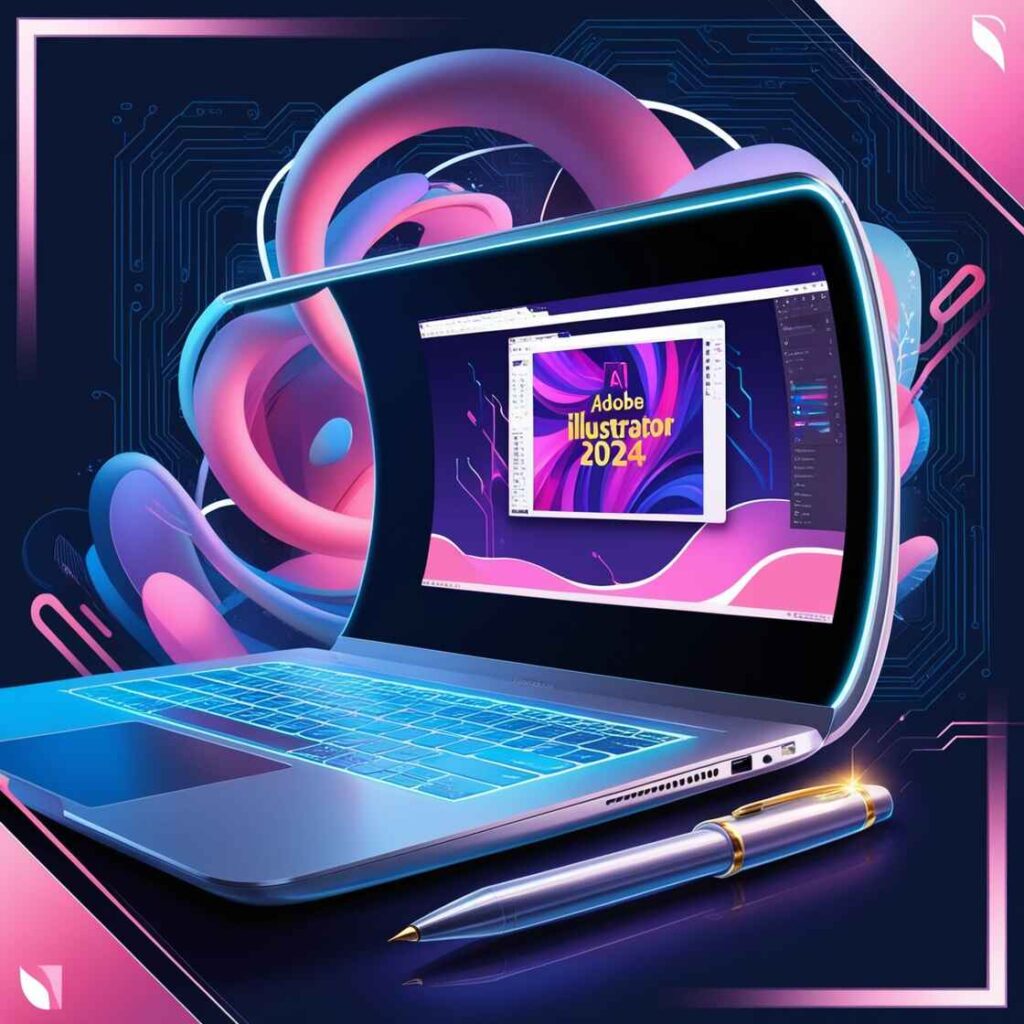
Case Study 3: Marketing Campaign for a Fashion Brand
Background: A fashion brand needed eye-catching visuals for a new marketing campaign.
Solution: The brand used AI image generators to create unique and engaging images that aligned with their campaign theme.
Outcome: The campaign saw increased engagement and sales, demonstrating the effectiveness of AI-generated visuals in capturing audience attention.
Detailed Explanation: In the competitive world of fashion, standing out is essential. The fashion brand in this case study needed visuals that were not only attractive but also aligned with their campaign’s theme. By using AI image generators, they could create a series of unique images that captured the essence of their brand and campaign. These visuals were used across various platforms, including social media, websites, and print ads. The result was a significant increase in engagement, as the eye-catching images drew more attention from potential customers. This, in turn, led to higher sales, proving the effectiveness of AI-generated visuals in marketing.
Broader Implications and Benefits of AI Image Generators
- Speed: AI image generators can produce high-quality designs much faster than manual methods. This is particularly beneficial for projects with tight deadlines, allowing designers to meet client demands without compromising on quality.
- Efficiency: Automating repetitive tasks allows designers to focus on more strategic and creative aspects of their work. For example, an AI can handle the initial concept generation, leaving the designer to refine and perfect the final product.
- Creativity: AI can generate novel design ideas and styles that might not be possible through traditional methods. This opens up new possibilities for innovation, as designers can explore concepts they might not have considered otherwise.
- Cost-Effectiveness: For small businesses and freelancers, AI image generators can be a cost-effective solution. They reduce the need for extensive resources and time, making high-quality design accessible to those with limited budgets.
- Scalability: AI image generators can handle large volumes of work, making them ideal for projects that require multiple designs or variations. This scalability ensures that designers can meet the demands of large campaigns or diverse client needs.
- Customization: AI tools can be tailored to specific design requirements, allowing for a high degree of customization. This ensures that the final output aligns closely with the client’s vision and brand identity.
These case studies highlight the transformative impact of AI image generators in the field of illustration. By offering speed, efficiency, and enhanced creativity, these tools are revolutionizing the way designers work. Whether it’s a startup needing a new logo, a freelancer expanding their portfolio, or a fashion brand launching a marketing campaign, AI image generators provide valuable solutions that meet diverse needs. As technology continues to evolve, we can expect even more innovative applications and success stories in the world of design.
Emerging Technologies in AI Image Generation
Generative Adversarial Networks (GANs)
Generative Adversarial Networks (GANs) have been a groundbreaking technology in AI image generation. GANs consist of two neural networks: a generator and a discriminator. The generator creates images, while the discriminator evaluates them. This adversarial process continues until the generator produces highly realistic images that the discriminator can no longer distinguish from real ones. GANs have revolutionized the field by enabling the creation of photorealistic images, which are used in various applications, from art to synthetic data generation.
Variational Autoencoders (VAEs)
Variational Autoencoders (VAEs) are another significant technology in AI image generation. VAEs work by encoding images into a latent space and then decoding them back into images. This process allows for the generation of new images by sampling from the latent space. VAEs are particularly useful for creating variations of existing images and exploring different styles. They provide a structured way to generate images that can be controlled and manipulated, making them valuable for creative applications.
Diffusion Models
Diffusion Models are a newer approach to AI image generation. These models generate images by iteratively refining random noise into coherent images. The process involves a series of steps where the model gradually improves the image quality. Diffusion models offer high control over the image generation process, making them ideal for applications that require fine-tuned outputs. They are gaining popularity due to their ability to produce high-quality images with detailed control over the generation process.
Predictions for the Future
Enhanced Realism and Control
Future AI image generators are expected to produce even more realistic images with greater control over specific attributes. Advancements in neural network architectures and training techniques will enable these improvements. For instance, we might see models that can generate images with precise control over lighting, texture, and other fine details. This will be particularly useful in industries like film and video games, where high realism is crucial.
Cross-Domain Applications
AI image generation will expand beyond traditional domains like art and entertainment. We will see its application in fields such as healthcare, where it can be used for medical imaging and diagnostics. For example, AI-generated images can help in creating detailed anatomical models for educational purposes or assist in the early detection of diseases through enhanced imaging techniques. Additionally, scientific visualization and the creation of synthetic training data for machine learning models are other areas where AI image generation will have a significant impact.
Ethical Considerations
As AI image generation technology advances, ethical considerations will become increasingly important. Issues like deepfakes and misinformation will need to be addressed through robust ethical guidelines and technological safeguards. The ability to create highly realistic images raises concerns about the potential misuse of this technology. Therefore, developing frameworks to ensure ethical use and prevent malicious applications will be crucial. This includes implementing detection mechanisms for deepfakes and establishing regulations to govern the use of AI-generated content.
Industry Adoption
Various industries will adopt AI image generation technologies to enhance creativity and efficiency. For example, the fashion industry might use AI to design new clothing lines, allowing designers to experiment with different styles and patterns quickly. The film industry could leverage AI to generate special effects and animations, reducing the time and cost associated with traditional methods. Additionally, marketing and advertising sectors will benefit from AI-generated visuals to create engaging and personalized content for their audiences.
Broader Implications and Benefits
- Speed: AI image generators can produce high-quality designs much faster than manual methods. This is particularly beneficial for projects with tight deadlines, allowing designers to meet client demands without compromising on quality.
- Efficiency: Automating repetitive tasks allows designers to focus on more strategic and creative aspects of their work. For example, an AI can handle the initial concept generation, leaving the designer to refine and perfect the final product.
- Creativity: AI can generate novel design ideas and styles that might not be possible through traditional methods. This opens up new possibilities for innovation, as designers can explore concepts they might not have considered otherwise.
- Cost-Effectiveness: For small businesses and freelancers, AI image generators can be a cost-effective solution. They reduce the need for extensive resources and time, making high-quality design accessible to those with limited budgets.
- Scalability: AI image generators can handle large volumes of work, making them ideal for projects that require multiple designs or variations. This scalability ensures that designers can meet the demands of large campaigns or diverse client needs.
- Customization: AI tools can be tailored to specific design requirements, allowing for a high degree of customization. This ensures that the final output aligns closely with the client’s vision and brand identity.
The future of AI image generation is incredibly promising, with emerging technologies like GANs, VAEs, and diffusion models leading the way. These advancements will enable the creation of even more realistic and controllable images, expanding the applications of AI image generation across various domains. However, as the technology evolves, it will be essential to address ethical considerations to prevent misuse. With continued innovation and responsible use, AI image generation will undoubtedly transform industries, enhancing creativity, efficiency, and accessibility in the world of design.
Absolutely! Let’s explore the details of selling prompts on themesyde, focusing on the available prompts, their benefits, and customer testimonials.
Overview of the Prompts Available
On themesyde, we offer a wide variety of prompts designed for use with AI Image Generators. These prompts cater to different styles and themes, ensuring that you can find the perfect match for your creative needs. Whether you’re looking for prompts to generate realistic portraits, abstract art, or intricate designs, our collection has something for everyone. Each prompt is meticulously crafted to maximize the capabilities of AI Image Generators, providing high-quality outputs every time.
Benefits of Purchasing Prompts
- Time-Saving: Purchasing prompts from our website saves you the time and effort of creating your own. This allows you to focus more on the creative process and less on the technical details.
- Quality Assurance: Our prompts are tested and refined to ensure they produce the best possible results with AI Image Generators. This guarantees that you get professional-grade images with minimal effort.
- Versatility: The prompts available on our website cater to a wide range of styles and themes, making them suitable for various projects, from marketing campaigns to personal art projects.
- Cost-Effective: Investing in high-quality prompts can be more cost-effective than hiring a professional designer, especially for small businesses and freelancers.
Customer Testimonials
John D.: “The prompts I purchased from themesyde have significantly improved my workflow. The AI Image Generators produce stunning visuals with these prompts, saving me hours of work.”
Emily R.: “As a freelance illustrator, these prompts have been a game-changer. They allow me to explore new styles and ideas effortlessly. Highly recommend!”
Michael S.: “The quality of the prompts is outstanding. They work seamlessly with various AI Image Generators, and the results are always impressive. Great value for money!”
By leveraging the power of AI Image Generators and our expertly crafted prompts, you can elevate your creative projects to new heights. If you have any questions or need further assistance, feel free to reach out!
Conclusion
In summary, we’ve explored the various prompts available on themesyde, the benefits of purchasing these prompts, and shared some customer testimonials. By using AI Image Generators, you can save time, ensure high-quality outputs, and explore a wide range of styles and themes. Our prompts are designed to maximize the capabilities of AI Image Generators, making them a valuable resource for any creative project.
We encourage you to try out these recommended tools and see the difference they can make in your workflow. Whether you’re a professional designer or a hobbyist, our prompts can help you achieve stunning results with minimal effort.
Visit our website to explore our collection of prompts and take your creative projects to the next level. Don’t miss out on the opportunity to enhance your work with the power of AI Image Generators!
Frequently Asked Questions (FAQs)
How do I use prompts with AI Image Generators?
Using prompts with AI Image Generators is straightforward. You simply type a description of the image you want to create, and the AI processes this text to generate a corresponding image. For example, a prompt like “a sunset over a mountain range” will produce an image depicting that scene. Experimenting with different prompts can help you achieve the desired results.
Are there any free AI Image Generators?
Yes, there are several free AI Image Generators available. Websites like Canva offer free access to their AI image generation tools, allowing users to create images from text prompts without any cost. Other platforms may also provide limited free usage or trial periods.
How can I improve the quality of generated images?
To improve the quality of generated images, consider the following tips:
Be specific with your prompts: The more detailed your prompt, the better the AI can understand and generate the image you want.
Use descriptive language: Include adjectives and specific details to guide the AI.
Experiment with different styles: Many AI Image Generators offer various styles and settings. Try different combinations to see what works best for your needs.
Can I sell prompts for AI Image Generators?
Yes, you can sell prompts for AI Image Generators. There are websites and communities where users buy and sell prompts to help others generate specific types of images. This can be a great way to monetize your creativity and expertise in crafting effective prompts. send your resume on company mail [email protected]
I need Services with …
- Wordpress Service
- Shopify Service
- Youtube Service
- Cv and resume Service
- Linkedin Service
Latest Post
-
Top Daily Taste WordPress Theme: Best Choice for Your Site
$ 15Original price was: $ 15.$ 13Current price is: $ 13. Add to cartAdd to WishlistAdd to Wishlist -
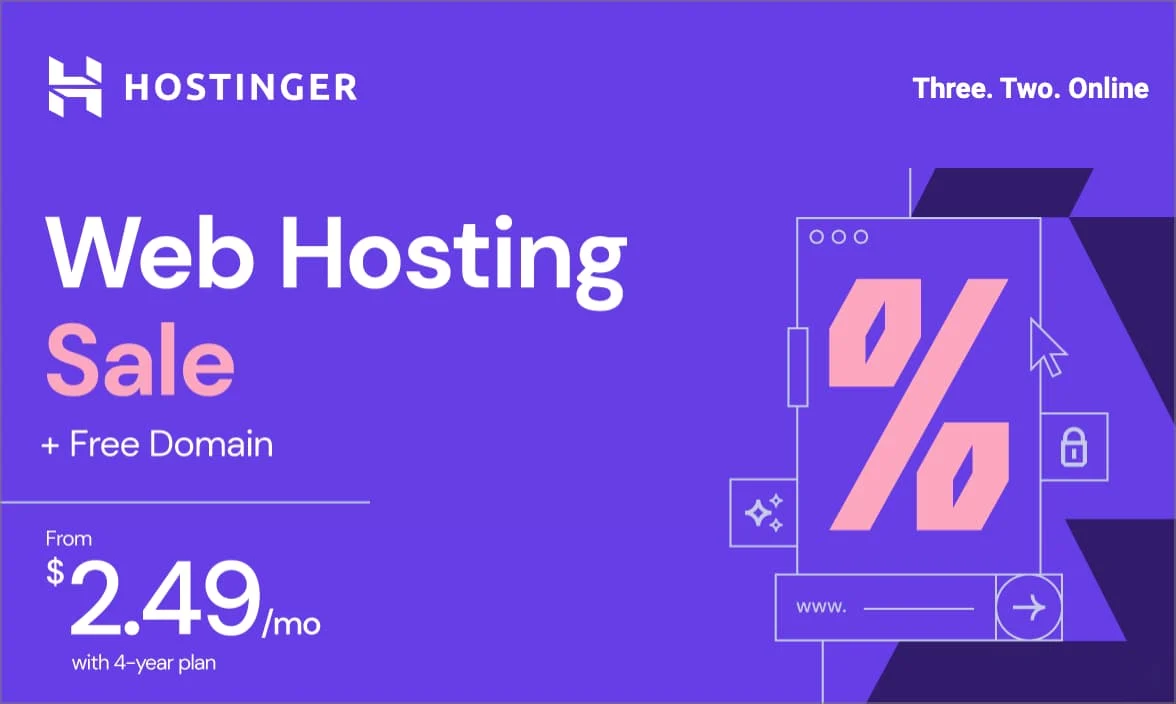
Get Hostinger’s Low-Cost Hosting Now!
Don’t miss out on affordable hosting with Hostinger – click now to bring your website online at an unbeatable price!



